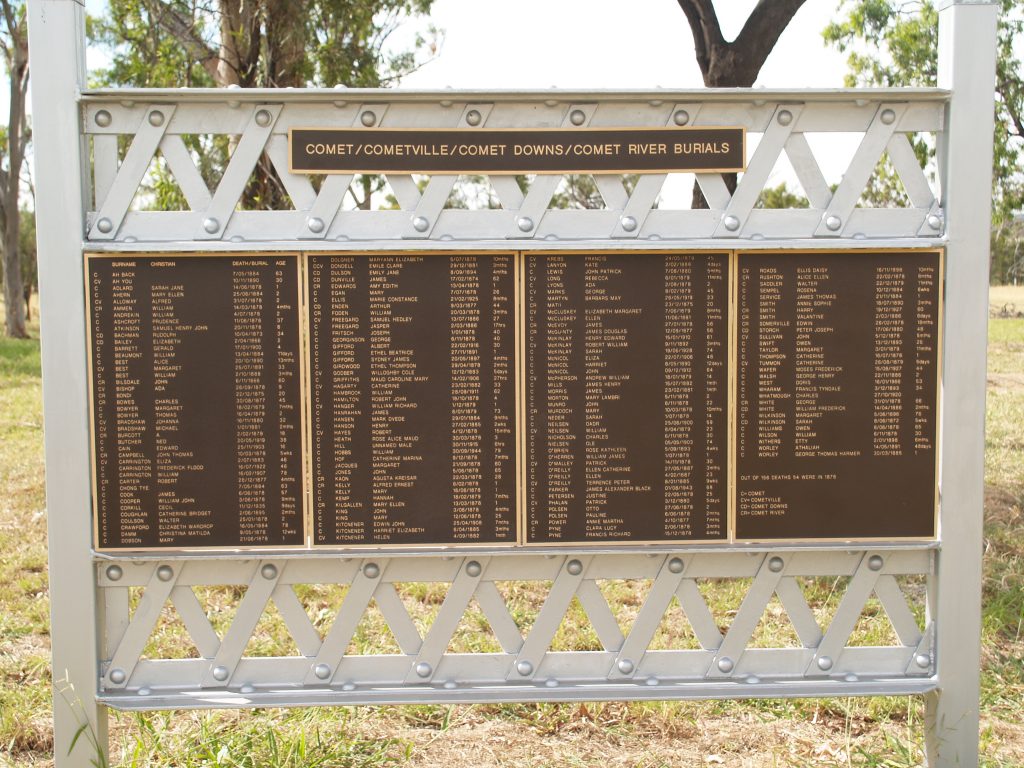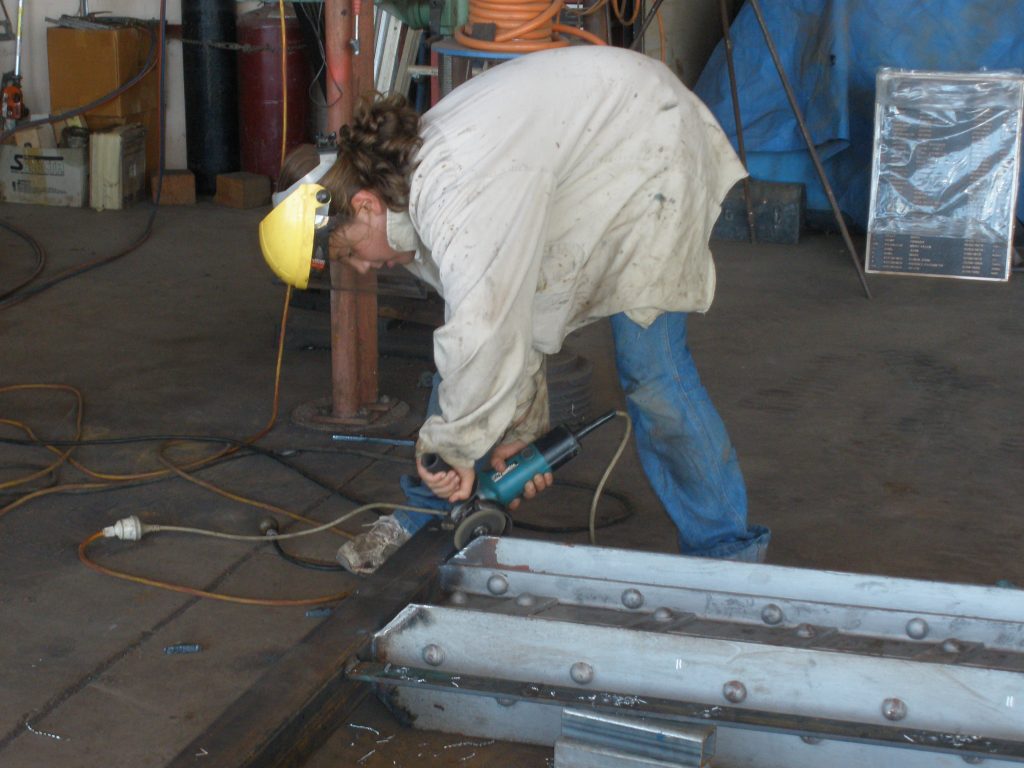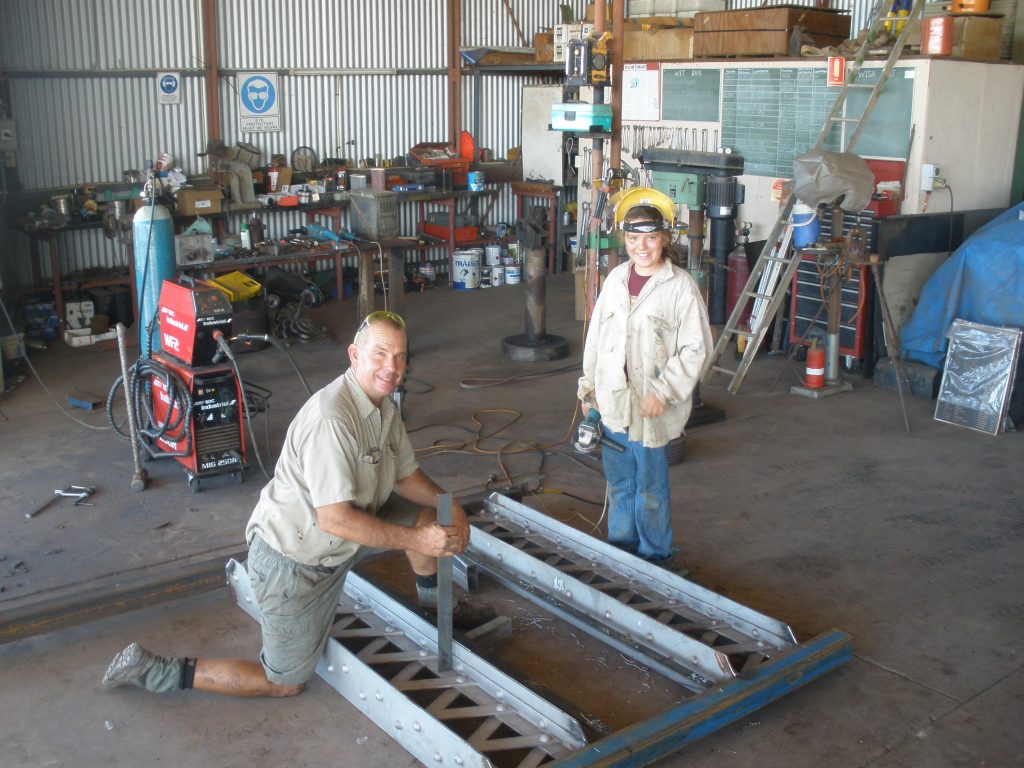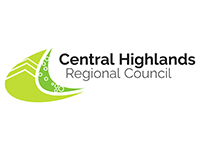Site 14
COMET CEMETERY MEMORIALS IN TOLMIE STREET
Through an action of the Comet School of Arts Inc., these informative memorial plaques were gifted to the Comet community in 2009 by the Central Highlands Regional Council. The standing frame was made by local farmers Neek Morawitz and Avanell Morawitz, from the discarded superstructure of the 1914 steel rail bridge over the Comet River. You will notice that this distinctive steel is incorporated in many of Comet’s information stands. This steel was manufactured in Scotland.
BURIALS AT COMETVILLE, COMET, COMET RIVER AND COMET DOWNS
You will also notice as you read the memorial plaques the names of persons buried at Cometville, Comet, Comet River and Comet Downs. The list covers interments in both the old and new town cemeteries, Comet Downs and Campbell’s Inn on the Comet River. Sometimes, Comet was referred to as Comet River making the list a little confusing. There are eight burials at Comet Downs.
WILLOUGHBY HANNAM SURVEYS CEMETERY IN JUNE 1878
This cemetery, along with the rest of Cometville, was surveyed in June 1878 by Railway Surveyor, Willoughby Hannam. We are not sure when folk were first interred in this cemetery as the old cemetery in Shakespeare Street was still in use at this time.
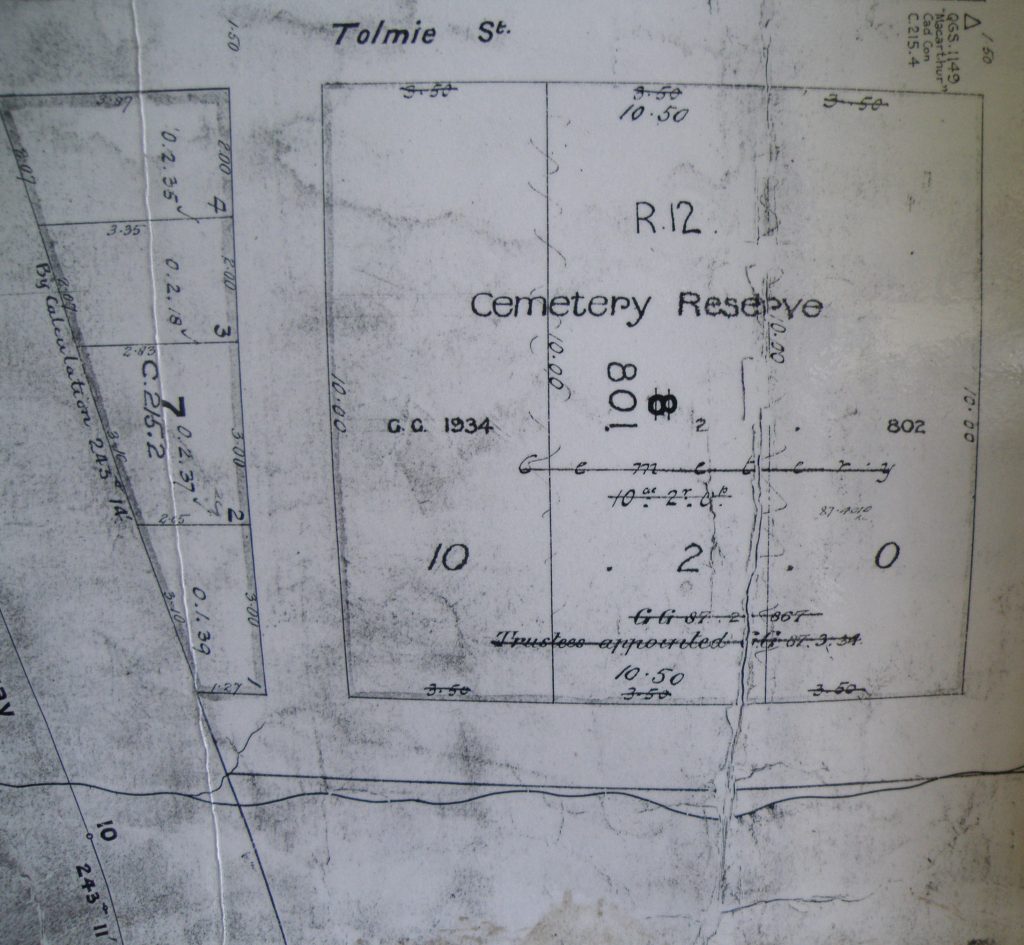
GREAT NORTHERN RAILWAY
The railway had a forward workers camp at Cometville as early as August 1877 with the railway line officially reaching the town on the 1st March 1878. The rail line was known as the Great Northern Railway even though it was heading westward to Longreach.
Chief Railway Engineer Robert Ballard and his workers had to construct three timber bridges to span the Comet River and its two anabranches. This work held the working men and their families here at Cometville for eighteen months.
COMETVILLE: A BUSY TOWN
By February 1878, the town had a bustling population of approximately 1500 people. With shops, hotels, a school with seventy pupils and a billiard room. Auctioneers conducted weekly stock sales. There was a police presence and a court of petty sessions was held monthly in one of the eleven hotels. A courthouse was built later that year. The town also had a railway doctor, chemist and receiving and forwarding agents. Bullock and horse teams were bringing in loads of wool and carrying out goods to the station properties on their return journeys. All together it was lively town. Added to this, mobs of sheep were trucked out by rail to Rockhampton.
WATER: A VERY PRECIOUS COMMODITY
Just imagine: 1500 people, men, women and children, their animals, plus the bullocks and horses belonging to the teamsters, depending on the water holes in the Comet River for their water. Not a good situation.
Railway Engineer Robert Ballard had sunk a well in the riverbed, to the west of the town, to water his steam locomotives. The water was lifted by a steam driven pump and transferred to tanks beside the railway line.
TOWN DESPERATE FOR SUFFICIENT CLEAN WATER
In the summer of 1878, the water situation was so bad that the community sought permission from Robert Ballard to access the water from these tanks.
Quoted in the Capricornian Newspaper dated 7th December 1878, “The water from the Comet River for use by the township was also becoming a serious problem, the fluid supplied being of a very inferior quality, and anything but conducive to health. With the view of getting a better article a deputation of the Committee of the Comet Progress Association waited on Mr. Ballard, asking for the use of the standpipes close to the town, which had been erected for use of the (railway) extension. Mr. Ballard generously acceded to their request and through the deputation informed the residents of the township that they could obtain a supply until the breaking up of the present season of scarcity.”
SLAUGHTERING LICENCES
From newspaper reports we know that many of the hotels had their own slaughtering licences. Combined with the dust and flies, I don’t think it would have been conducive to a healthy environment. Adding to the town’s woes there was a severe drought occurring in 1878.

RAIL ACCIDENT – 6 DEAD
I imagine that these deaths would have torn the community apart. Not only the deaths of the children but also the five men accidently killed in the railway accident at Murdering Gully (Comet River Overflow No.1). Another of these men died on the train taking him to hospital in Rockhampton and is buried in the Blackwater Cemetery. One of these men, John Munro was married with a family.
Very little rain fell until relief storms at the end of the year filled the waterholes in the riverbed.
A REPRIEVE FROM THE DRY CONDITIONS
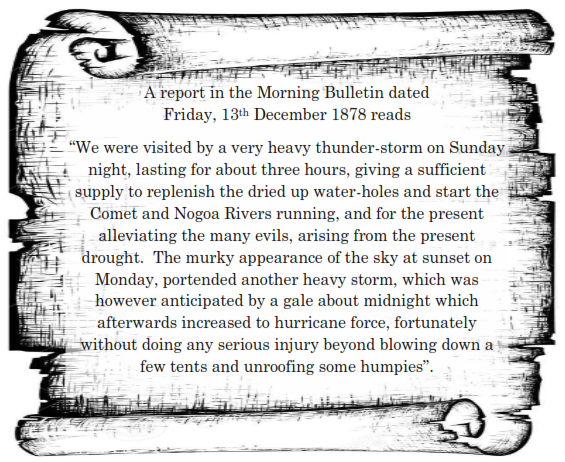
Thus, the township had a reprieve from the horrific conditions of 1878. When the bridges were completed, the majority of the workers and businesses moved on to Emerald with the railway reaching there in May 1879.
THE LAST BURIAL IN THE CEMETERY
Looking at the memorials, we see many of Comet’s residents have been laid to rest here. Doris West was the last person to be buried here on the 16th January 1966. Even though the years have passed, this cemetery is still open for interments.
No doubt there are many families living in the Central Highlands who would be descendants of those hardy folk who came west with the Railway.
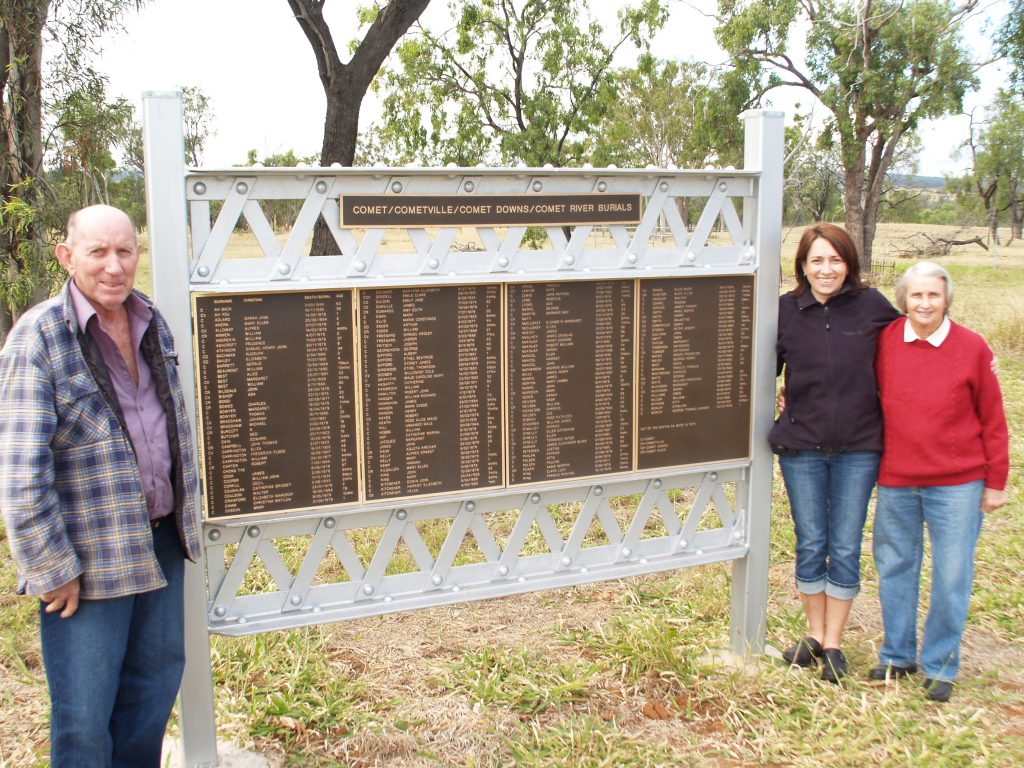
1. 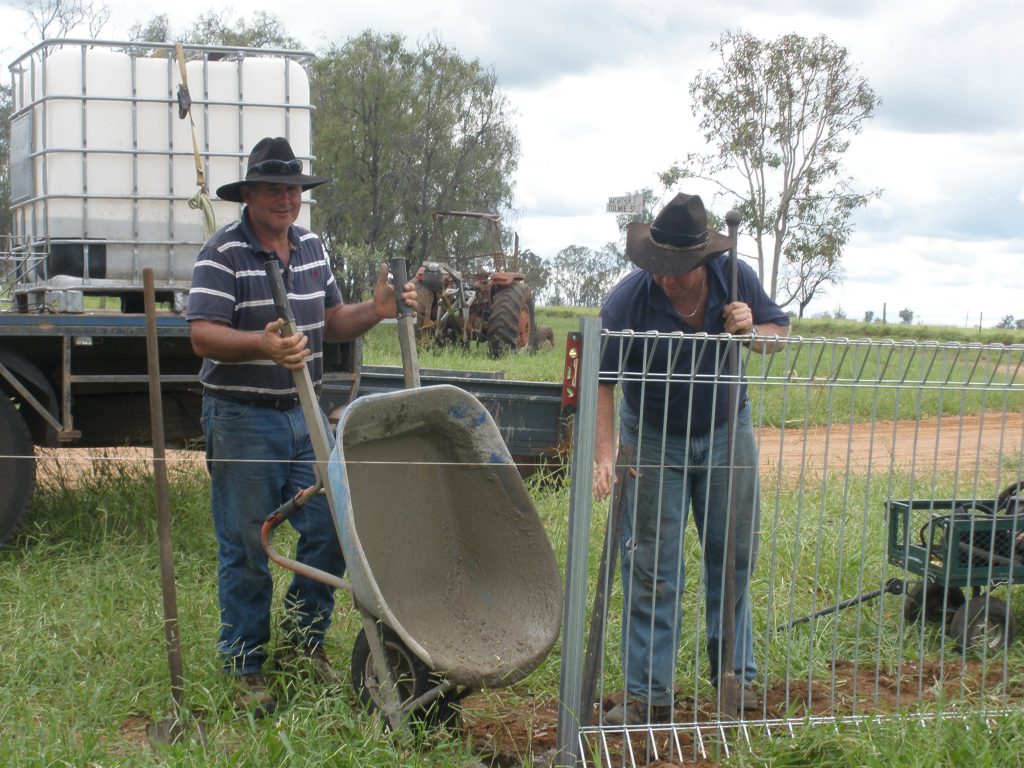
2. 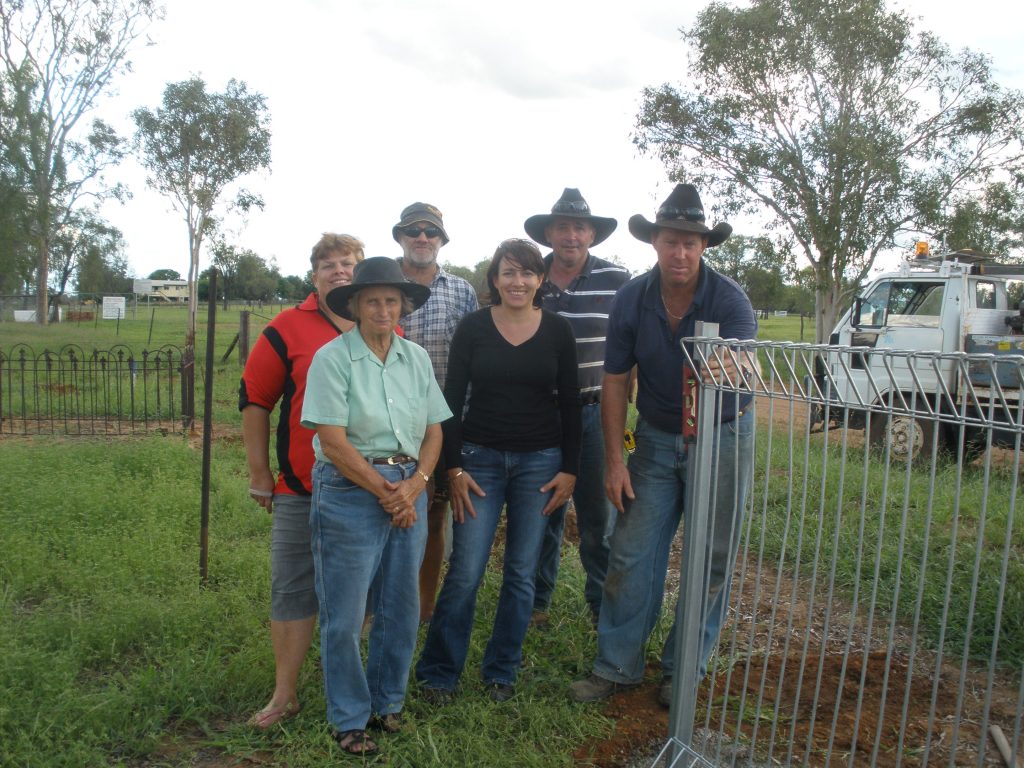
3. 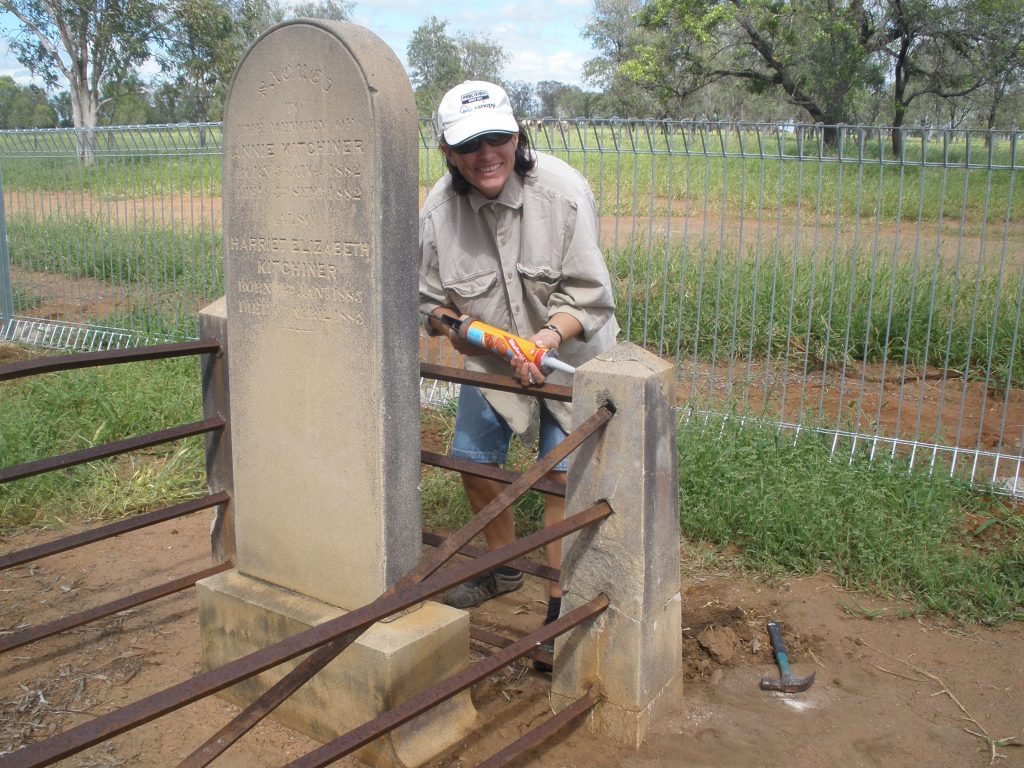
4. 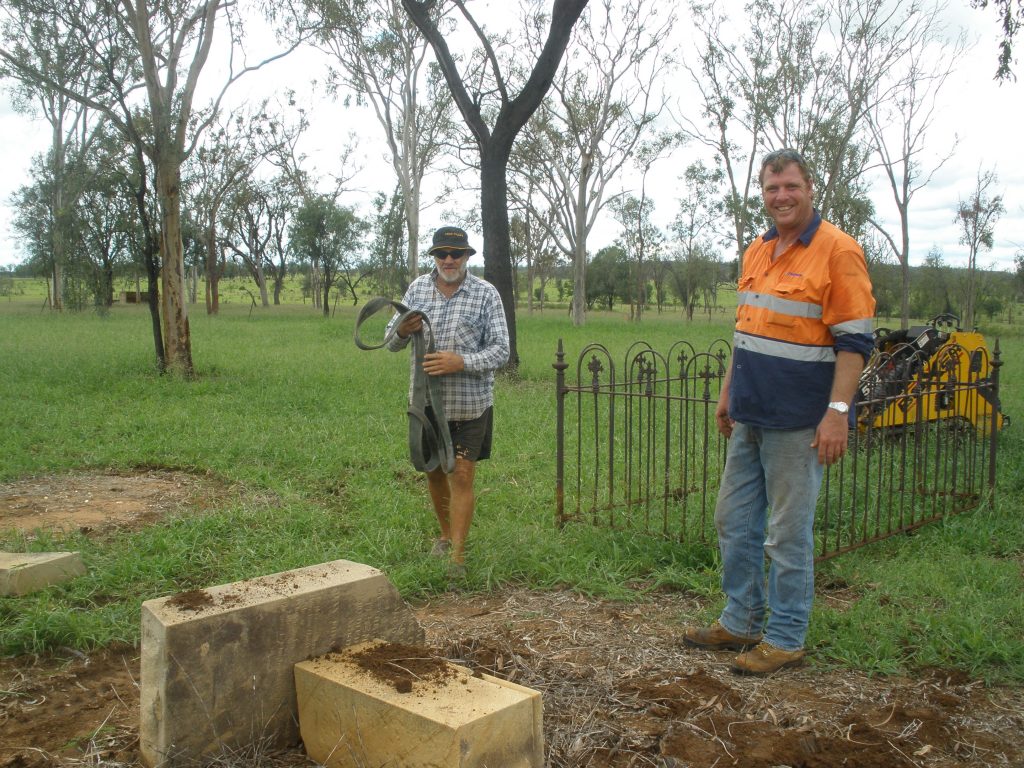
5. 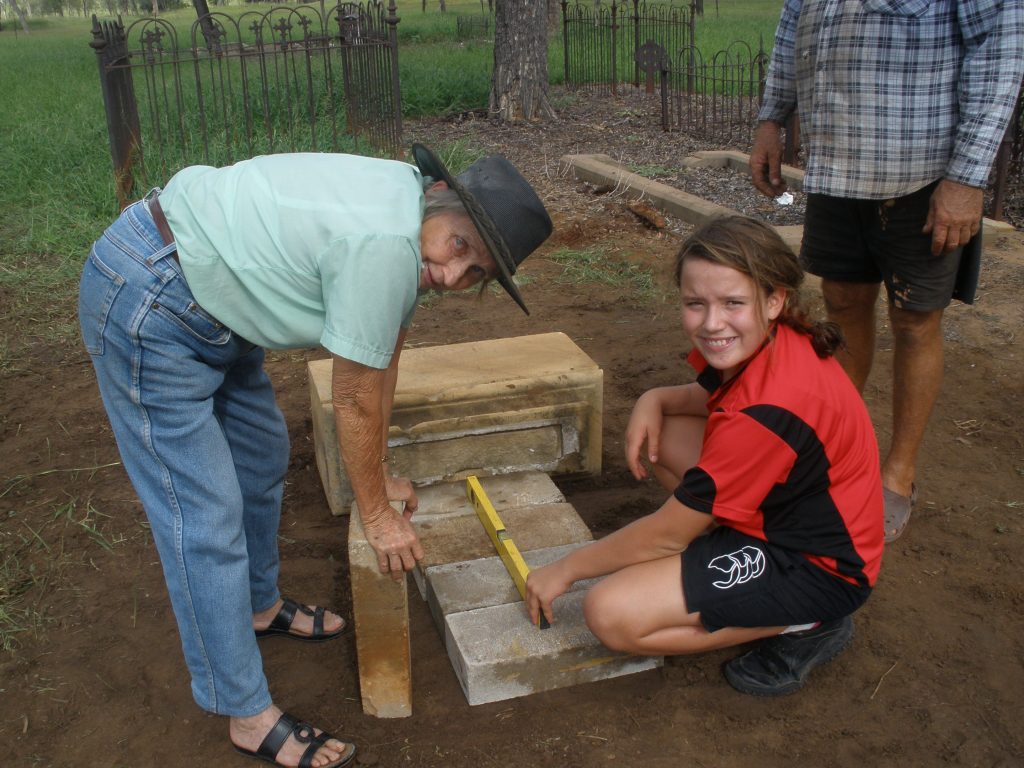
6. 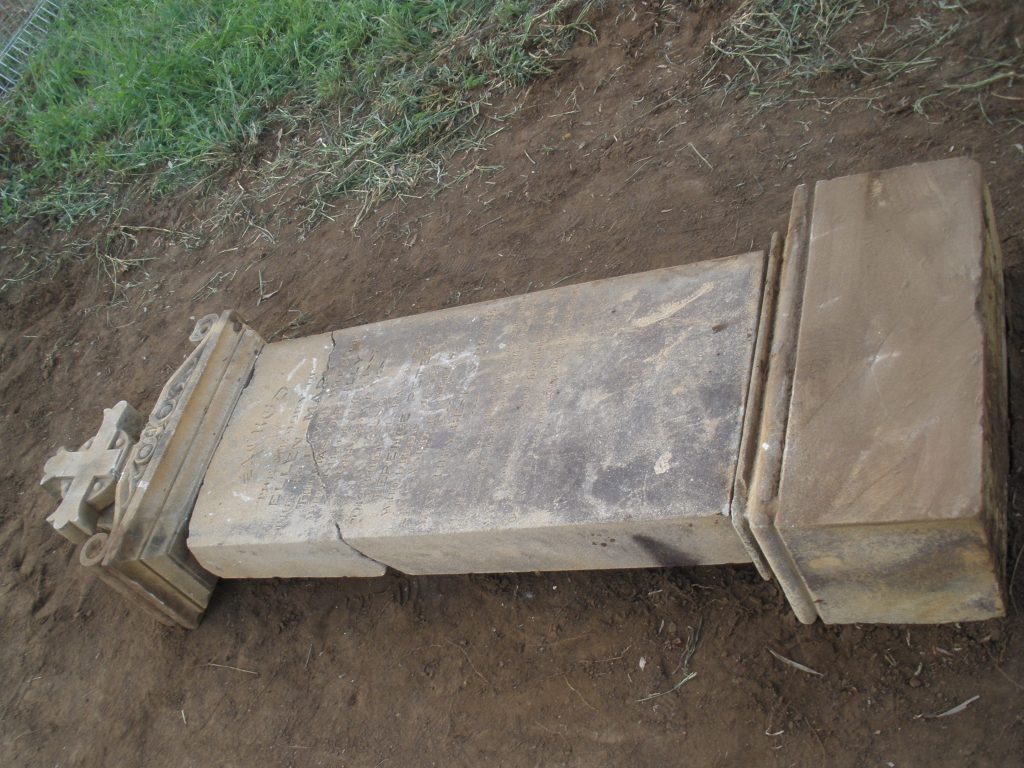
7. 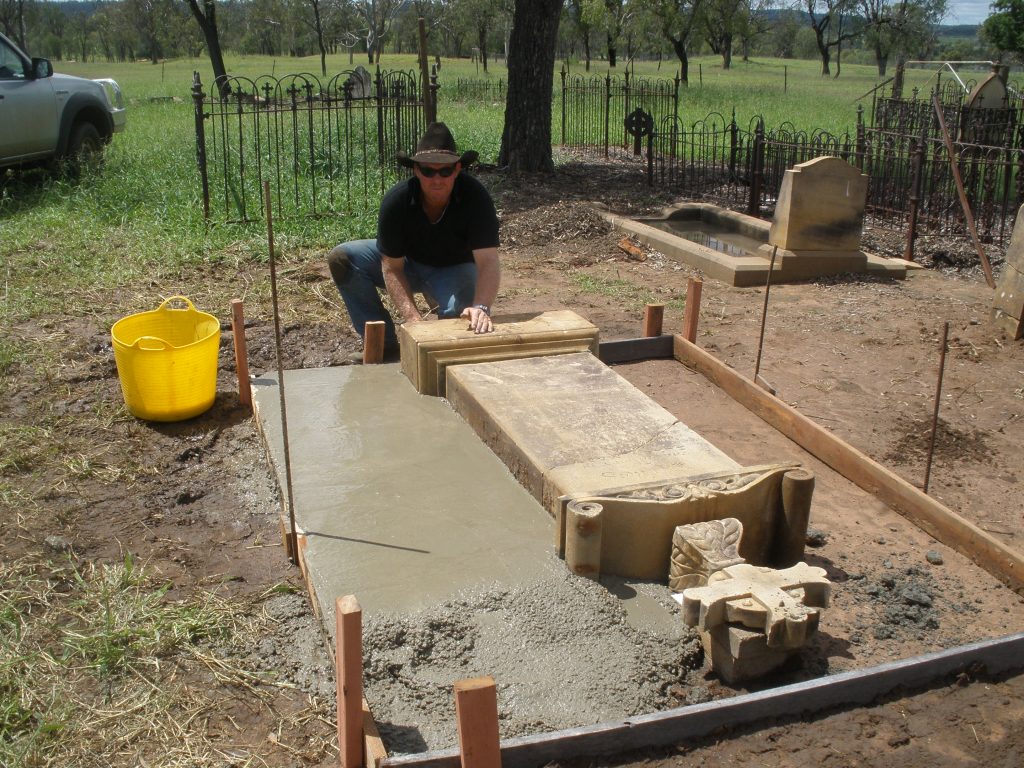
8.
2. The old fence was removed and a new one installed, along with a vehicle gate and visitors gate.
3. Jenny Lucas, Neville Weedon, Larry Pavlicevich, Rosemary McLeod, Robyn Morawitz & Charles Batts.
4. Much needed repairs were made to fences around graves.
5. A large headstone sadly had been hit and broken. It laid in a pile on the ground. This was rearranged into a laying position and secured to preserve it. Neville and Wes Weedon.
6. Rosemary McLeod and Avanell Morawitz.
7. This is the headstone of Ellen O’Reilly.
8. Charles Batts.
Ellen O’Reilly (headstone pictured above) gave birth to Terrence Peter on the 8th January 1885. He lived just 10 weeks according to the headstone (registered death was at 9 weeks, we do not know which is correct).
Ellen then died on 4th February 1887 giving birth to Ellen Catherine. Ellen Catherine died 3 months later on the 27th May 1887.
Thanks goes to Central Highlands Regional Council, Jenny Lucas, Neville Weedon, Larry Pavlicevich, Rosemary McLeod, Charles Batts, Avanell Morawitz, Robyn Morawitz for their contribution at the cemetery along with all the community members who contributed to working bees in and around Comet over the years.
– Compiled by Rosemary McLeod, 2018.
– Photos: National Library of Australia; State Library of Queensland; Rosemary McLeod collection; Robyn Morawitz.
– Video: Robyn Morawitz.
– Contact: cometales@gmail.com.au



